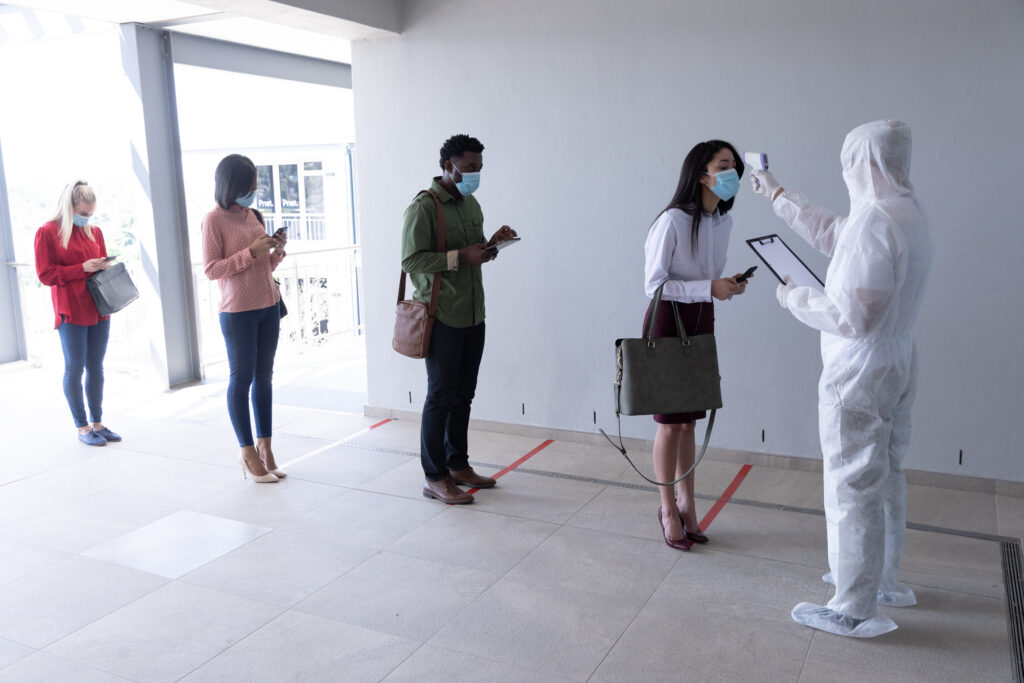
How COVID is forcing a change in organizational governance

Over the many months of the COVID crisis, almost every business and organization in the world has been through immense upheaval. Initial fire-fighting and emergency measures began at every level, and even after a couple of weeks of massive disruption, many companies took longer to settle into their new stance: remote working, access to company assets from home, lack of person-to-person contact, and new methods of workflow automation. In short, the entire paradigm shifted.
For governance, risk, and compliance (GRC) professionals, it was a fraught time. Because, as organizations began to accept and settle into this altered state of operations, new risk and compliance challenges emerged.
But many proactive risk teams are using this time as an opportunity to evolve the way organizations are governed, thus better preparing for future risk — whatever that looks like.
Reactionary measures are not sustainable
As the pandemic continued to evolve, most enterprises quickly developed alternative working processes (physical safety measures, remote systems access, communications) in consultation with risk and compliance managers. And many have managed, so far, to work safely with minimal disruptions. But new working practices adopted on the fly are not ideal – or indeed, safe.
For example, the remote workforce means that employees could be accessing confidential information from their personal devices or via an unsecured network. Some may become relaxed about security measures, let their guard down, and click on a malicious link. Others still may bypass operational controls and head into the office without prior approvals. There are countless risks that organizations have not had to deal with previously, and if not approached strategically, organizations will remain reactionary, which could result in serious financial or reputational harm.
Bringing all governance activities together in a single place
GRC professionals must take a step back and reassess the risk landscape, which is still evolving, a year into the pandemic. Risks continue to change, and the way that organizations respond will be the foundation for future crisis management and overall organizational governance.

This is where an integrated GRC software platform can provide great value.
By bringing together security, risk management, compliance, and audit executives in a single, cloud-based tool, even in a remote work situation, you can streamline collaboration, automate repetitive tasks and focus everyone’s attention on strategically identifying new and emerging risk.
In previous articles here in Tech Wire Asia, we have highlighted Galvanize and its HighBond platform as the only integrated solution on the market that hits the sweet spot of:
– Executive-ready, real-time reporting to inform better decisions,
– Robotic data automation that pulls insights from any source or application,
– Dynamic workflows to bring clarity over accountability,
– And a platform that grows and evolves with an organization’s maturity level and use cases.
The new requirements of organizational governance
Countless point solutions that don’t integrate, on-premise software, spreadsheets, and SharePoint — these are all now considered a risk. To endure this pandemic and come out on the other side, poised for growth and prosperity, it’s imperative that organizations implement the right governance tools.
Software that scales with an organization
Galvanize has a series of products that, together, make up its integrated HighBond platform, including software for audit management, third-party risk management, internal controls management, and compliance management. All of these tools can be used separately or together, letting an organization start small and grow into an integrated risk program.
Cloud-based and secure
Unlike many other GRC solutions, HighBond is cloud-based, which means customers always have the latest version, and new or revised regulations, frameworks, and workflows are always being added. As regulations continue to evolve, GRC professionals need the latest updates at their fingertips. Plus, Galvanize is dedicated to the highest levels of security. In fact, the platform is FedRAMP authorized and used by over 800 government agencies around the world.
Real-time dashboards for C-suite and the board

Imagine if all of your data from across the organization flowed into a single, beautiful dashboard. A simple, real-time reporting tool that can be accessed by the C-suite and the board so that at any time, stakeholders can be assured of the state of risk and compliance across the organization. That’s what you can do in HighBond. The dashboards are made to be intuitive, and you can drill down into any of the data points to get more information. Galvanize even uses the HighBond platform to run its own business, tracking every organizational metric and risk in the dashboards.
Automated workflows and powerful data analytics
Connecting data does more than create dashboards; it also helps streamline workloads, realign resources, and helps an organization make better, more informed decisions. As workloads increase, there isn’t always an alignment with the ability to bring on more headcount. So, organizations must automate where they can by leaning on pre-built workflows and analytics for things like user access controls testing or uncovering accounts payable fraud. This frees up staff to focus on more strategic work, like risk assessments.
Why now is the right time to introduce technology
Inconsistent, insecure, and risk-averse data & business processes have led to poor decision-making over the last year, with many organisations exposed to newly heightened risk situations. While the impacts of this are still being felt across the globe, Galvanize continues to unite disparate teams and data toward common growth goals. GRC software like HighBond helps protect organizations from risk and arms them with a strong, unified system that positions them to take on new growth opportunities in the future.
The world is pivoting to its new realities and will continue to do so for years to come — why wouldn’t we then change our approach to governance? Now is the time to start. Head over to the Galvanize blog to read up on “How to evaluate GRC technology solutions“.
READ MORE
- Ethical AI: The renewed importance of safeguarding data and customer privacy in Generative AI applications
- How Japan balances AI-driven opportunities with cybersecurity needs
- Deploying SASE: Benchmarking your approach
- Insurance everywhere all at once: the digital transformation of the APAC insurance industry
- Google parent Alphabet eyes HubSpot: A potential acquisition shaping the future of CRM
